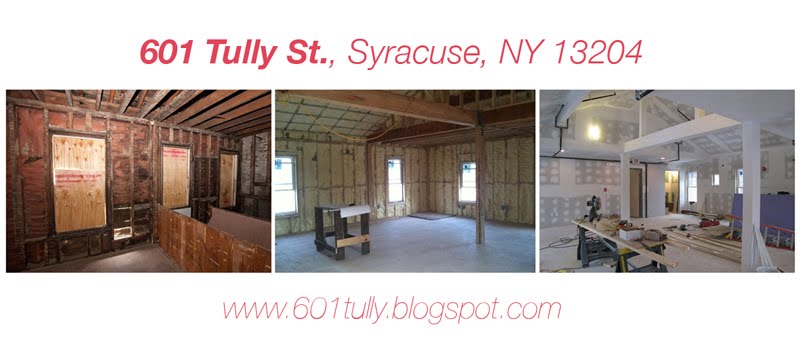In reference to the Bloomtown project presented by Tony, I was also very disappointed in its attempts to call itself a community engaging piece. The problem with it is that it is merely an “art piece,” it is a visually stimulating/engaging. What is different about the 601 Tully project is that while it aims to become a visual art piece in the community, it also adds a layer of physical engagement. Not only does it propose a community art space upon its completion, it interacts with the community on different levels with the community throughout its construction process (for example: the wall drawing and floor poems). In this way I agree with John’s categorization of 601 Tully as Kwon’s “Invented Community” because 601 Tully is process of community interactions/relationship,s rather than a static art piece that only attempts to visually stimulate its community.
A way in which a project such as the Bloomtown project could be furthered to be not only a visually, but also physically engaging project for the community like 601 Tully. To succeed in this an example proposal that could add that additional layer of engagement can be created creating a set of wire-frame furniture within the “flower plans” that could be used to grow food for the nearby residents. By incorporating an element, food, that is necessary and is actually lacking for the nearby residents, the Bloomtown project will find itself as both the visually and physical engaging project that makes 601 Tully a social art project.
Interestingly while we were in Detroit, we were also able to visit the Heidelberg Project by Tyree Guyton, the artist and inspiration I used for my proposed garden at 601 Tully. The Heidelberg Project is also a good example of a social art project that engages the community at a scale of community involvement that I believe 601 Tully is eventually aiming for in the Near West Side.
Outside the classroom I have a tendency not to engage with projects such as 601 Tully. In a way the reason I signed up for the course was to understand how to become involved using my skill sets, rather than relying on a title (such as those we discussed with text between the architect and artist) to define me to a specific role in such projects. I feel this class has opened up my understanding that there are opportunities to positively engage with the community and they are easier to become a part of than I thought before. I hope to become more community aware through my design processes.

601 Tully not only generates physical engagement, by providing artifacts in the building produced by individuals from the community, but also social and political engagement. Whereas I'm not sure the Bloom Town project was really trying to do those things. So, in that respect it could be called quite successful, as a piece of "old school" public art (a piece of art located in a generally speaking public place). Though not successful now, when what is needed by that community is not a pretty picture but actual, physical change. So basically, intentions of the work have to be taken into consideration when reflecting on public art projects (in the general sense) in addition to the definition and role of the "community" in said projects. 601 Tully I believe has all the right intentions, and from what I've gleaned, done the research in the community and area. So hopefully the outcome will be aligned with the intentions when the project is 'complete' and social change will be enacted by the physical changing of the building.
ReplyDelete